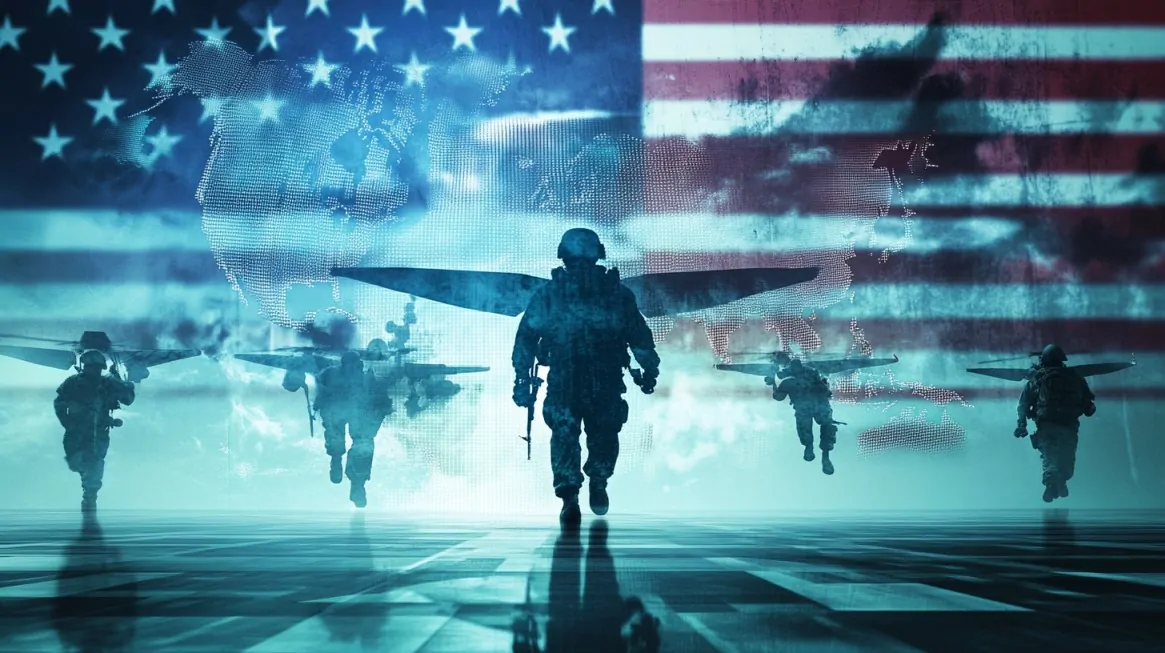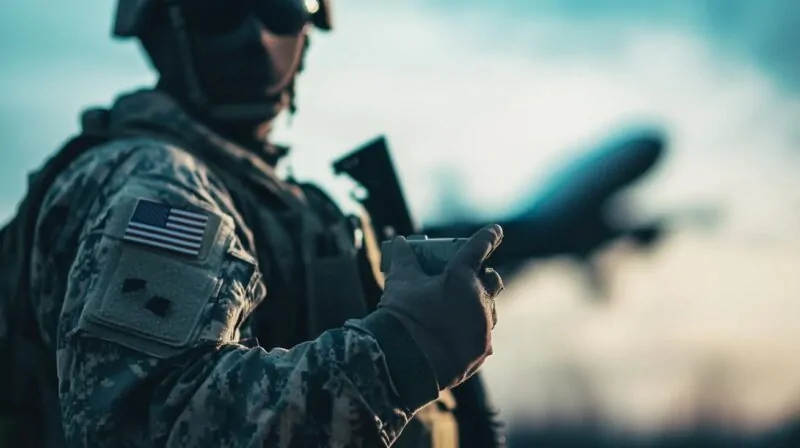U.S. military alliances and partnerships serve as essential tools for maintaining global order, advancing American interests, and promoting regional stability. Arrangements go far beyond military cooperation, they create deterrence, strengthen diplomatic bonds, and support long-term strategic goals.
- Formal alliances
- Quasi-alliances
- Strategic partnerships
These relationships form the scaffolding of U.S. global influence. While formal treaties provide legal clarity and long-term security assurances, informal and flexible partnerships allow for tailored responses to regional needs.
Together, they help shape a network of influence that extends across continents and adapts to shifting power dynamics.
Let us talk about these alliances in greater detail.
Table of Contents
ToggleFramework of U.S. Alliances
What is the state of U.S. allies’ export controls on AI and semiconductor technologies? @csis_ai explores the legal tools and policy frameworks shaping allied export controls and the challenges of aligning them with U.S. national security requirements.https://t.co/eBT8eXqN6P
— CSIS (@CSIS) March 17, 2025
- Legal commitment
- Strategic interest
- Operational cooperation
Some are bound by formal treaties, while others rely on strategic alignment and mutual goals.
Each framework plays a role in shaping U.S. military influence and readiness across regions.
Formal Alliances
Formal alliances involve clearly defined legal obligations, often codified in mutual defense treaties. Such alliances function as deterrents, sending a clear message that aggression against one will trigger a collective response.
Mutual defense treaties, such as the one that underpins NATO, bind signatories through international law. These obligations are not symbolic, they translate into operational realities.
- Joint exercises
- Align command structures
- Integrate military logistics
U.S. participation ensures global reach and strategic permanence. Formal alliances strengthen deterrence, reinforce political coordination, and provide platforms for the shared development of military technology.
Trust and predictability are hallmarks of these relationships, which allow for synchronized long-term planning..
- Legal obligations under mutual defense treaties
- Integration of military infrastructure and command systems
- Standardized communication and operational procedures
- Recurring joint military exercises
- Political coordination on security strategies
- U.S. troop deployments and forward operating bases
Quasi-Alliances and Major Non-NATO Allies
Quasi-alliances operate without the binding nature of formal treaties but still deliver:
- Extensive military cooperation
- Intelligence exchange
- Arms transfers
Taiwan, Egypt, and Jordan exemplify this category. Taiwan receives U.S. arms and political backing under the Taiwan Relations Act.
Egypt and Jordan participate in joint exercises and rely on American military aid, which supports both regime stability and regional counterterrorism efforts.
Major Non-NATO Ally (MNNA) status grants certain nations enhanced access to U.S. defense support without the obligations of NATO membership.
These countries contribute to U.S. operations in peacekeeping, regional stabilization, and maritime security, often serving as anchors for presence in volatile areas.
- No formal treaty obligations
- Military cooperation driven by strategic interests
- U.S. arms sales and security assistance
- Participation in joint counterterrorism and peacekeeping efforts
- Enhanced defense cooperation through MNNA designation
- Access to military financing, technology transfers, and training programs
Bilateral and Multilateral Partnerships
Bilateral and multilateral partnerships function based on shared goals rather than legal treaties.
These arrangements enable the U.S. to engage partners flexibly, shaping cooperation around trade security, anti-piracy, regional defense, and counterterrorism. India serves as one of the most prominent bilateral partners.
Defense ties have expanded through agreements like COMCASA and BECA, along with increasing joint military exercises and defense procurement. U.S.-India cooperation also focuses on Indo-Pacific maritime security.
Southeast Asian nations, particularly through ASEAN mechanisms, collaborate with the U.S. in military capacity-building, disaster relief coordination, and regional maritime exercises.
African and Latin American countries engage with the U.S. in anti-narcotics operations, security reform, and military training.
- Engagement based on mutual security or economic goals
- No treaty-based obligations
- Regional-specific military training programs
- Counterterrorism and anti-narcotics cooperation
- Naval patrols and maritime security collaborations
- Strategic dialogues and diplomatic consultation platforms
Major Regional Alliances and Partnerships

U.S. military strength is not only defined by domestic capabilities but also by regional partnerships and alliances that extend American influence across continents.
These relationships serve as force multipliers, allowing for quicker responses to global threats, regional stability, and long-term strategic positioning.
In both the Transatlantic and Indo-Pacific regions, the U.S. has built a dense web of formal and informal alliances.
Transatlantic Region
NATO anchors U.S. influence in Europe. Formed to contain Soviet expansion, NATO now addresses a spectrum of modern threats, including:
- Cyberattacks
- Terrorism
- Hybrid warfare
Collective defense under Article 5 commits each member to respond if one is attacked, reinforcing deterrence.
U.S. leadership drives NATO’s strategic direction. American troops stationed across the continent provide forward presence and readiness for rapid deployment. Joint training exercises improve interoperability and readiness.
- Significant U.S. military presence in Germany, Poland, and Italy
- Frequent multinational drills to enhance coordination
- Defense innovation, including cyber capabilities and missile defense systems
- Forward bases and logistics hubs to support rapid response
The Organization of American States (OAS) supports hemispheric cooperation. While not a military alliance, its political and security framework aligns closely with U.S. objectives.
It engages in electoral monitoring, conflict mediation, and human rights initiatives, stabilizing the Western Hemisphere through diplomacy.
NORAD, the binational U.S.-Canada command, guards North American air and maritime approaches. It provides early-warning capabilities and tracks potential threats.
Surveillance radars, missile detection systems, and integrated command centers ensure constant vigilance.
- Aerospace Warning: Detection and tracking of airborne threats
- Maritime Warning: Coordination of maritime domain awareness
- Integrated Command: Joint operations run from shared U.S.-Canada centers
Indo-Pacific Region
U.S. security presence across the Indo-Pacific is structured through binding bilateral treaties and flexible multilateral groupings.
Geopolitical pressure from China, persistent nuclear threats, and maritime disputes have shaped these defense arrangements into some of the most robust in the world.
| Country/Alliance | Strategic Summary | Key Elements of Cooperation | Year Alliance Formed | U.S. Troop Presence | Primary Focus |
|---|---|---|---|---|---|
| Japan | Key ally in East Asia; supports U.S. regional presence. | Troops, missile defense, regional bases | 1951 | Approx. 50,000 | East Asian stability |
| South Korea | Focus on deterrence and readiness vs. North Korea. | Mutual defense, joint drills, nuclear coordination | 1953 | Approx. 28,500 | Korean Peninsula security |
| Philippines | Grants base access; key to South China Sea ops. | EDCA access, maritime security, training | 2014 (EDCA) | Rotational presence under EDCA | Maritime access |
| Australia and New Zealand (ANZUS) | Strong U.S.-Australia ties; limited NZ involvement. | ANZUS, joint ops, intel sharing | 1951 | Rotational training and exercises | Joint operations |
| Taiwan | Unofficial partner; supported to deter China. | Arms sales, training, asymmetric defense | Unofficial (Taiwan Relations Act 1979) | No official presence | China deterrence |
Challenges and Evolving Dynamics
On the 4 US soldiers missing in a military exercise in Lithuania, the search is ongoing. We regret any confusion about remarks @SecGenNATO delivered on this today. He was referring to emerging news reports & was not confirming the fate of the missing, which is still unknown
— NATO Spokesperson (@NATOpress) March 26, 2025
U.S. military alliances do not exist in a vacuum. They are shaped by shifting power balances, domestic politics, and contested expectations.
While alliances provide structure and predictability, they also face headwinds in adapting to emerging threats and political recalibrations.
Strategic competition with major powers, inconsistent foreign policy signals, and growing demands for burden-sharing have introduced new levels of complexity. Several recurring themes shape the evolving nature of these global partnerships.
Geopolitical Competition
Power dynamics have shifted dramatically over the past two decades. China’s assertiveness in regional and global affairs challenges the effectiveness and cohesion of U.S.-led alliances.
Economic statecraft, infrastructure diplomacy, and military expansion offer alternatives to U.S. influence, especially in Asia and Africa.
Russia, while more focused on European theaters, plays a strategic role in alliance disruptions. Arms sales to countries like India and energy dependencies in Central Asia add strain to otherwise steady partnerships.
Major sources of geopolitical pressure include:
| Category | Activity |
|---|---|
| China’s Activities | Expansion of military outposts in disputed maritime regions |
| Belt and Road Initiative and digital infrastructure expansion | |
| Use of economic leverage in diplomacy and trade deals | |
| Russia’s Engagement | Energy ties that complicate alliance unity in Europe, through Ukraine, and Central Asia |
| Arms exports to countries with overlapping security interests with the U.S. | |
| Influence campaigns aimed at weakening NATO cohesion |
Domestic Political Shifts
Foreign policy direction can swing sharply with changes in U.S. leadership. Previous administrations emphasized transactional approaches and questioned the value of multilateral commitments. Current efforts prioritize alliance reinforcement and global engagement.
Allied countries also face political turbulence that affects cooperation. Election cycles, protests, and ideological shifts often reshape defense budgets, foreign policy outlooks, and hosting agreements for U.S. forces.
Examples of political variability include:
| Country | Leadership/Administration | Policy Direction Toward U.S. Alliances |
|---|---|---|
| United States | Biden Administration | Promotes coalition-building and institutional reliability |
| Prior Administration | Emphasized bilateralism and cost-sharing demands | |
| South Korea | Conservative Governments | Favor stronger U.S. ties and missile defense upgrades |
| Progressive Leaders | Prioritize inter-Korean dialogue and regional autonomy | |
| Philippines | Duterte Administration | Scaled back U.S. cooperation |
| Marcos Jr. Administration | Renewed ties, expanded basing agreements, and reaffirmed security commitments |
Alliance Burden-Sharing Debates
Growing military costs have led to renewed scrutiny over contributions. U.S. partners are being asked to shoulder more responsibility in defense expenditures and regional commitments.
NATO’s 2% GDP target serves as a benchmark, but several members have yet to meet it. In the Indo-Pacific, similar conversations are underway as the security environment grows more contested.
Transactional diplomacy, framing alliances in terms of financial contributions or short-term trade-offs, can erode strategic trust. Predictable policy, shared goals, and long-term planning are required to maintain alliance integrity.
Summary
U.S. military alliances remain central to maintaining global stability and defending shared interests. They form a resilient web of deterrence, support diplomatic efforts, and anchor regional balances of power.
Adaptability and modernization are essential. New threats in cyberspace, space, and technology demand evolving strategies. Sustaining leadership requires a long-term vision, bipartisan commitment, and reliable engagement with allies and partners.
Investments in trust, interoperability, and readiness ensure that the U.S. remains at the center of global security cooperation.
Related Posts:
- The COVID-19 Crisis and Its Impact on Military and…
- Can the US Army Maintain Its Technological Edge Over…
- A Look at US Military Helicopters: Past, Present, and Future
- The Rise of Ruggedized Displays - How ViewPoint…
- A Detailed Guide to Military Branch Colors and Their Meaning
- What Happens When Safety Protocols Fail in the…







